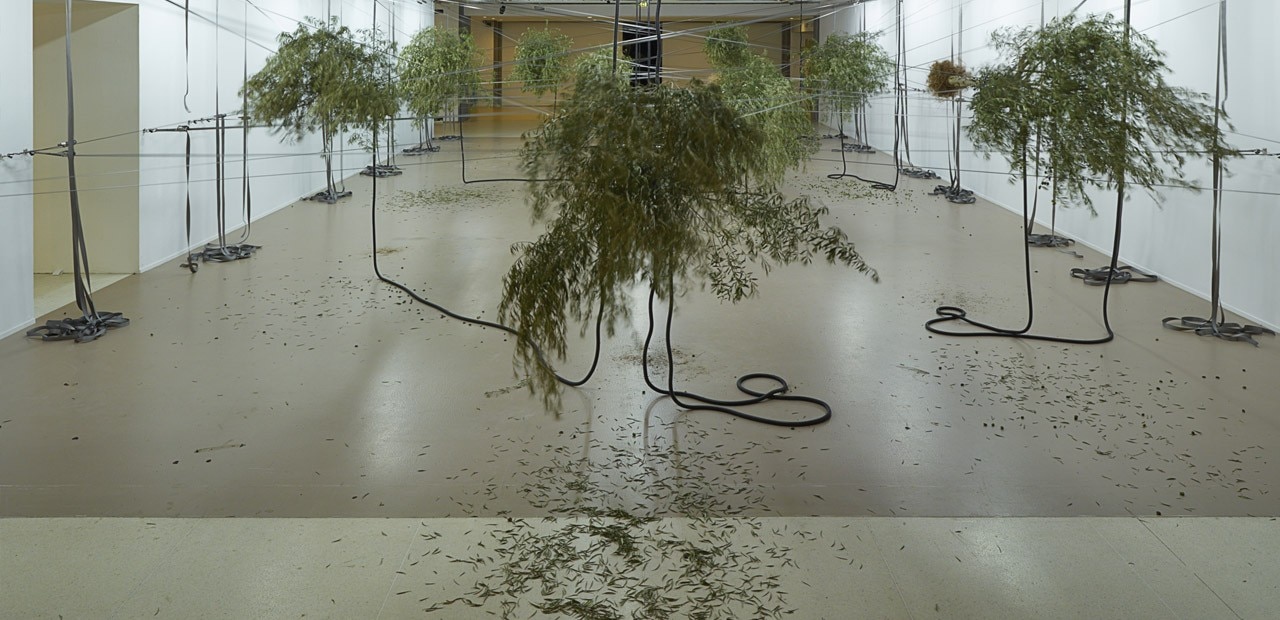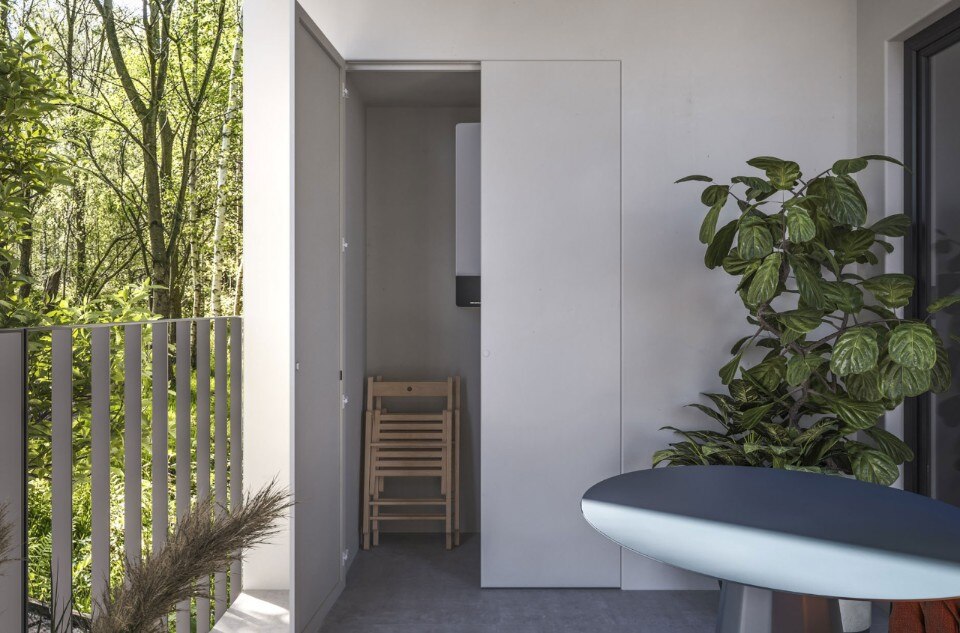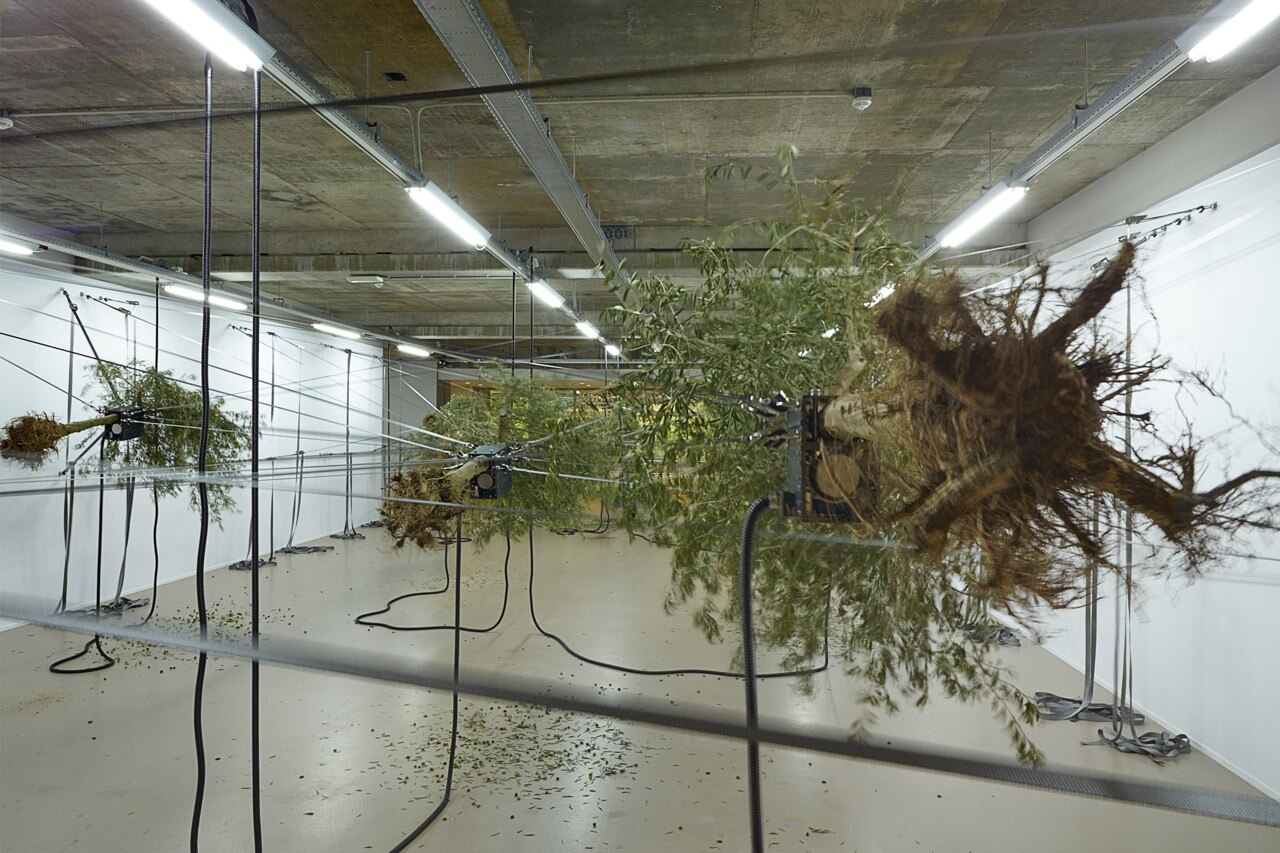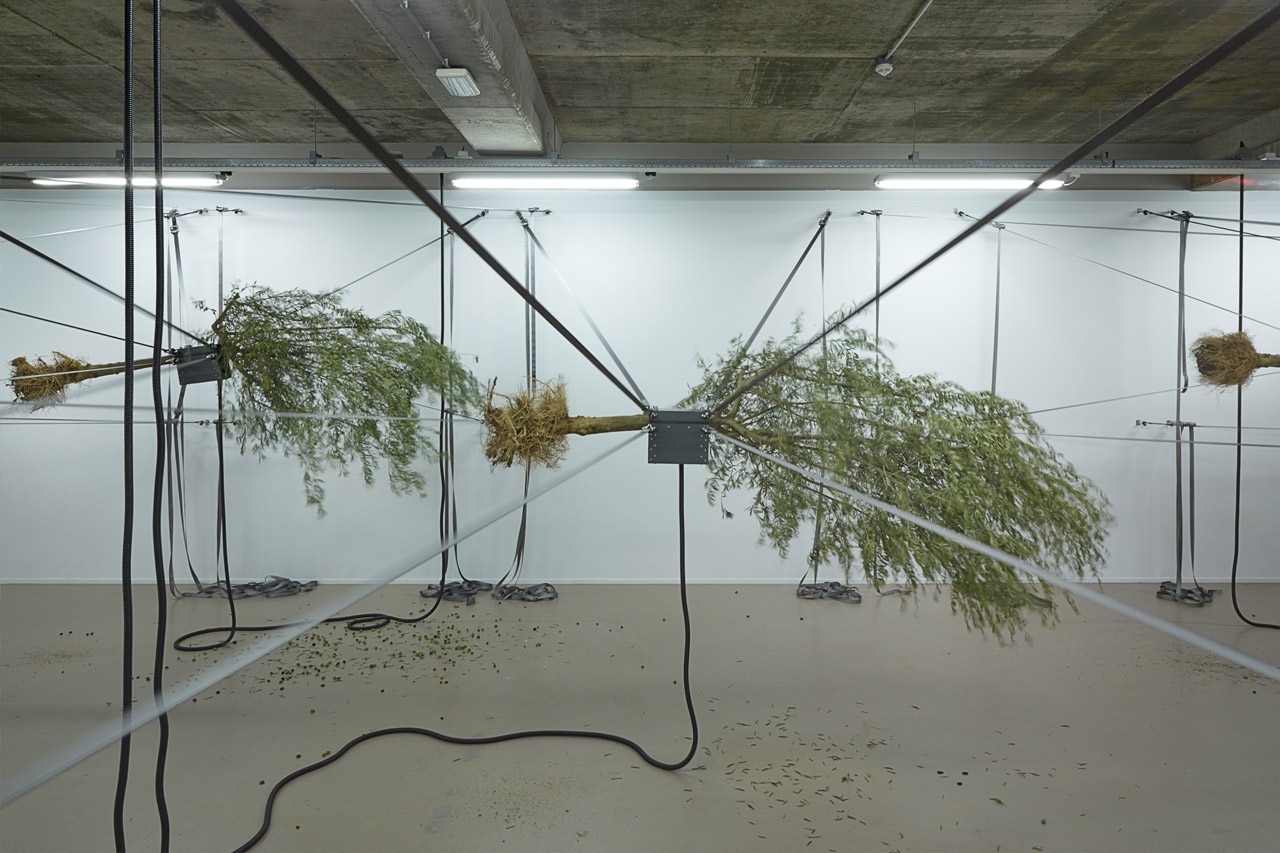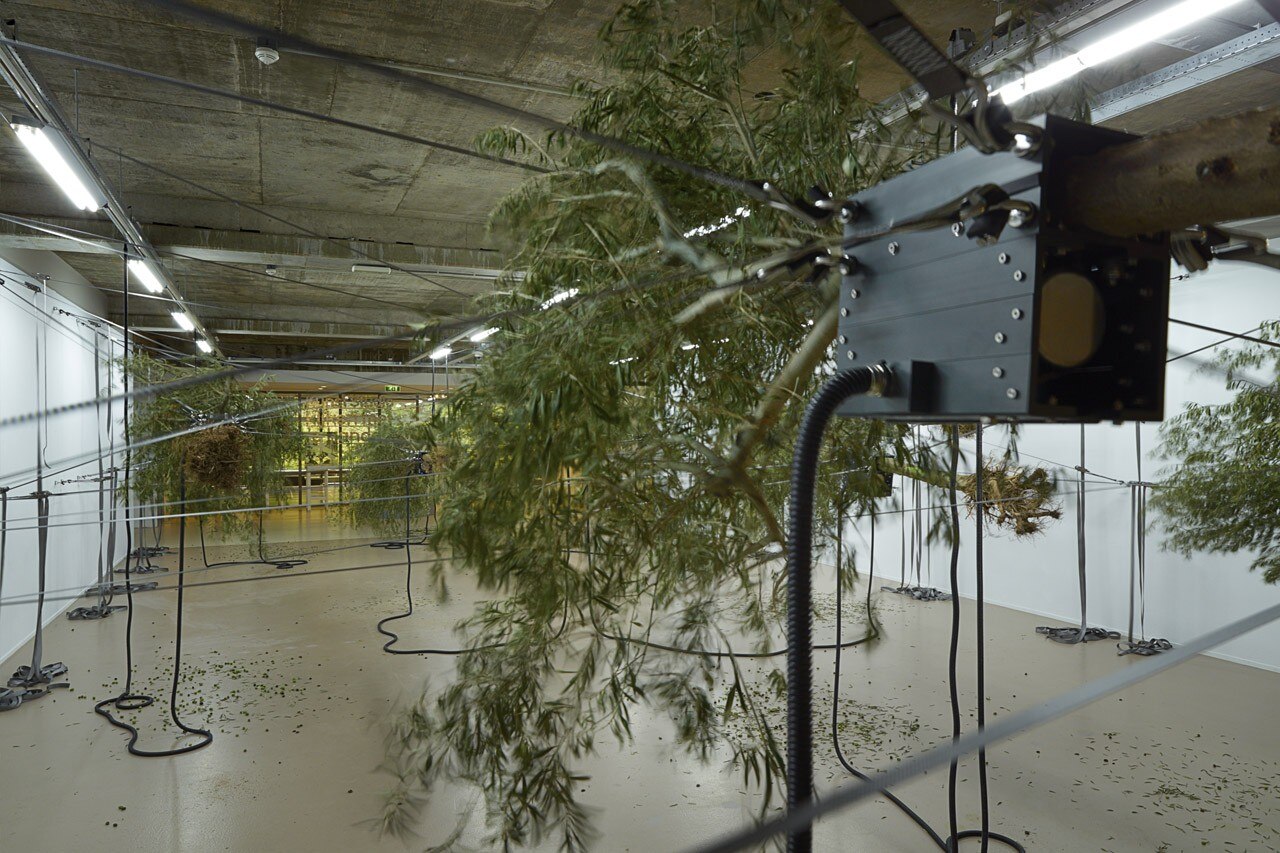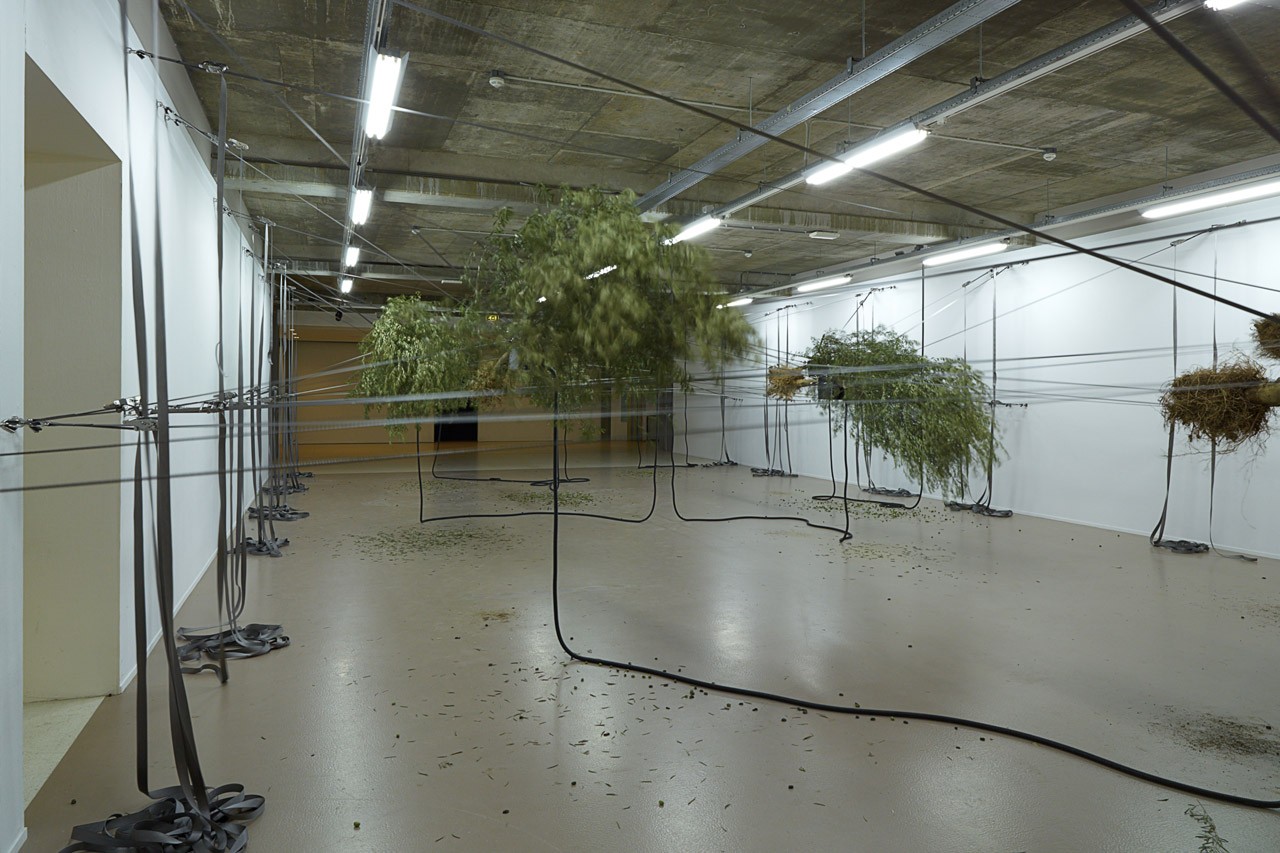
The olive tree is a recurring element in Hapaska's installations. If Hapaska had to give the work a title, it would have been Intifada: an Arabic word that literally means “shaking off,” and that is now freely translated as rebellion or resistance.
She says of her work in Museum Boijmans Van Beuningen: “Uprising, rebellion or resistance, this is my intention for the spirit of this installation. I don’t necessarily mean this in an obvious political sense, more a shaking off of that which limits a better future.”
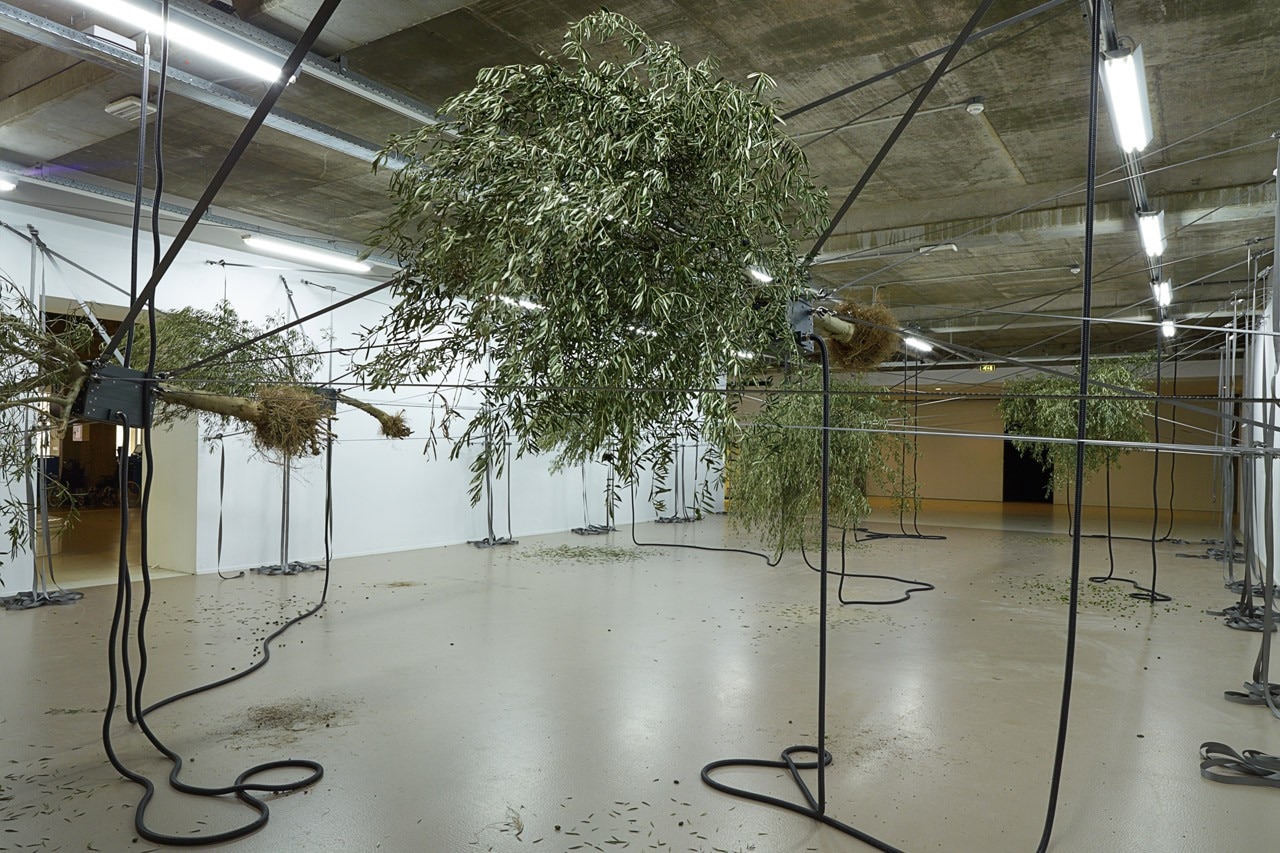
Sensory Spaces is the title of a series of solo exhibitions in the Willem van der Vorm Gallery, situated in the museum’s entrance area. For each edition an artist is invited to respond to the particular characteristics of this space in a surprising way.
The specific character of the gallery, a long, high space open on its two short sides, is the spatial context within which each artist is invited to develop a work.
“The space has been designed to give visitors a choice, you can choose to stand at either end to view the work, a sort of polarized viewpoint – which is ironic since it is polarized viewpoints that produce such unfortunate circumstances to begin with – or you can choose to enter the installation. The trees are hung at a height where an average height visitor must bend or bow their heads to move freely through the room, an act of physical, not just visual, engagement.”
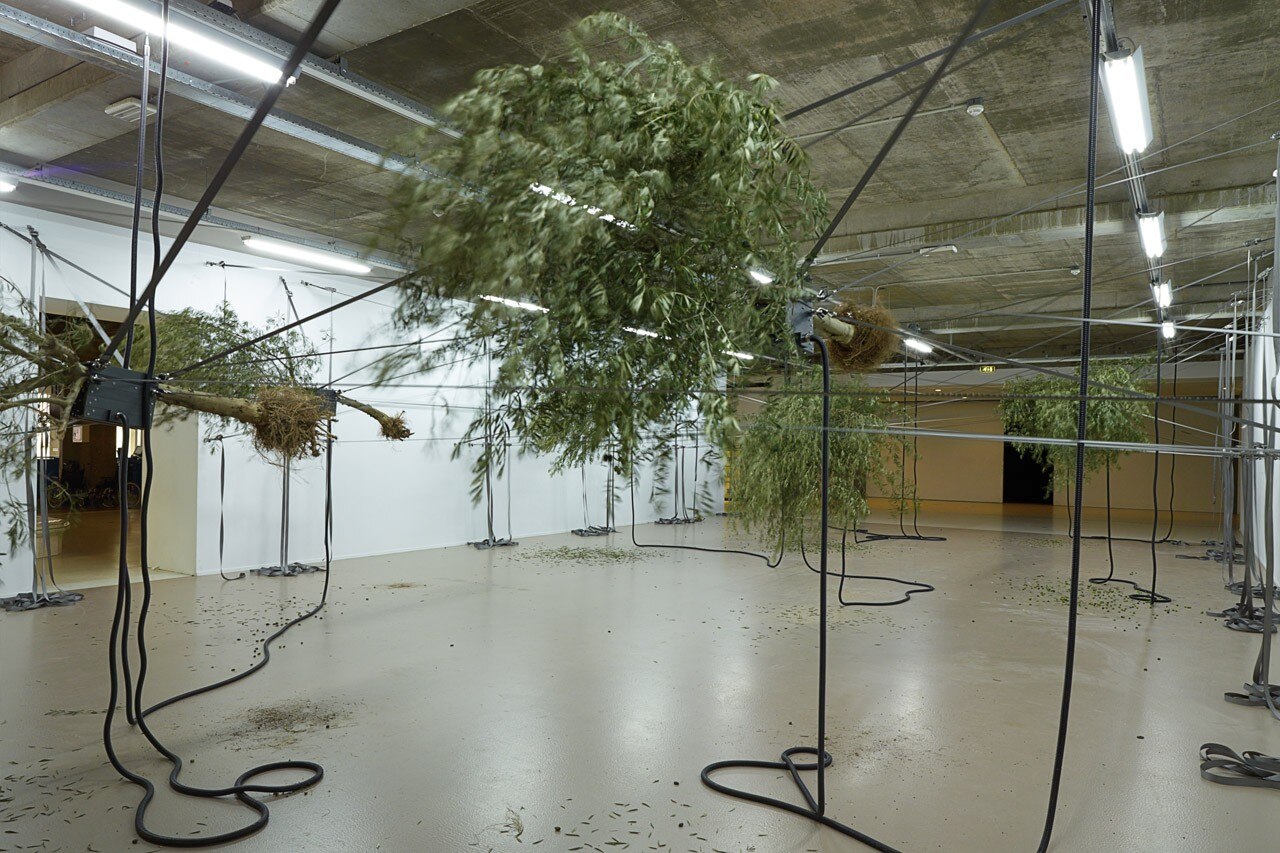
until January 25, 2015
Sensory Spaces 5
Siobhán Hapaska
Museum Boijmans Van Beuningen
Museumpark 18–20, Rotterdam

INQUADRA: DeFAVERI's seamless energy efficiency
INQUADRA is DeFAVERI's flush-mounted monoblock that cancels thermal bridges for maximum energy efficiency and a minimalist design. Easy to install and customize, it marks one of the innovations from a long-established company, now part of the ECLISSE Group.



